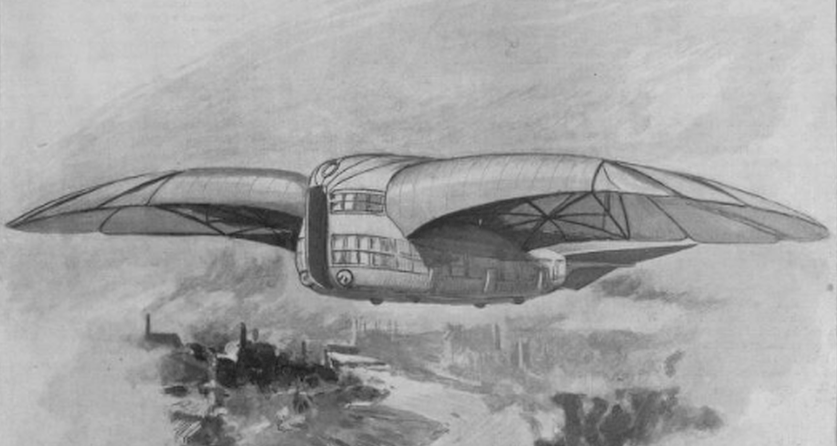In 1898, Banchory man “Fleein Geordie” Davidson gave the world his “Flying Machine of the Future”.


His “Air-Car Monoplane” would have steam propellers under “wings of a bird”.
He managed a “hop” in an earlier model at Inchmarlo before crashing into a tree.
Below are sketches and diagrams of the air-car taken from an 1898 article entitled “The Modern Icarus – The Newest of Flight Machines” which appeared in the English Illustrated Magazine.



The Davidson Gyropter (1909)
Geordie moved to Colorado in US and continued work on flying machines. Pictured here is his “Gyropter” which was again steam-powered. According to an article in Scientific American, it did manage to lift itself off the ground for a few seconds at a time, before the boiler exploded and destroyed the whole thing.




References
The Sphere. 25th August 1900. pg. 31
Aberdeen Evening Express. 1st April 1989. pg. 14
Scottish Notes and Queries. Vol. 12, pg. 41
Banffshire Reporter. 17th September 1898, pg. 3
Aberdeen Press and Journal. 7th September 1898. pg. 6
Gunston, P. (1977) Helicopters at War. Chartwell, Secaucus, NJ. p.13
The Sketch. 23rd April 1913. pg 91.
Fleein Geordie’s Ither Inventions
Here are some images of George L. O. Davidson’s other patents and inventions, which are all great and someone should most definitely build models of them.
A Velocipede built for two (1884)

Vertical Takeoff Flying Machine (1907)
GB Patent GB190701960A


Improved Flying Mermaid Tail? (1899)
GB Patent GB189813700A


Aerial Machine (1889)
GB Patent 13207

